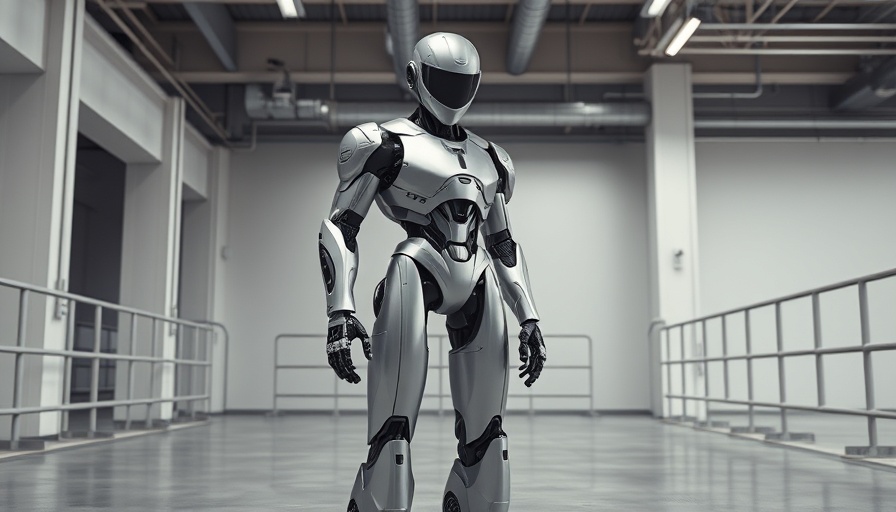
Humanoid Robotics: The Next Frontier in Automation
In the ever-evolving landscape of technology, humanoid robotics has emerged as a compelling area of development, merging the operational efficiency of machines with human-like capabilities. Recently, Figure, a pioneering company in this sector, achieved a remarkable $39 billion valuation in its latest funding round, signaling not just investor confidence but the promise of transformative advancements in the way we approach labor in various sectors including warehouses and factories.
Investor Interest Reflects Market Dynamics
Figure's funding round raised over $1 billion and includes major players like Parkway Venture Capital and tech giants Nvidia and Intel Capital. This influx of capital is indicative of a broader trend where investors are increasingly backing technologies that enhance operational efficiencies in existing industries. Such investment strategies highlight an evolving interest in founder-friendly funding models that appreciate both the potential of technology and the operational realities faced by businesses.
Operational Implications for SMBs and Founders
As Figure plans to expand its fleet of humanoid robots and improve infrastructure for their deployment, small and medium-sized businesses (SMBs) should take note. The need for efficient working capital strategies in light of these advancements cannot be overstated. Companies are now challenged with understanding how automation can not only streamline operations but also contribute to significant business valuation levers that attract potential investors.
Preparing for the Future: The Need for Capital Stack Optimization
The ambition to scale operations with advanced humanoid robotics might require SMBs to reassess their capital stack optimization. Decisions on whether to bootstrap or seek external financing through equity or debt will play a crucial role in how well a company navigates this transformative phase. Founder-operators must evaluate not just their immediate financial needs, but also the long-term implications of their funding decisions on their paths to potential public offerings.
Valuation Triggers Ahead of IPOs
For many founders at the helm of SMBs, understanding when and how to transition from a private to public entity can significantly impact the firm's market standing. The advancements in robotics and automation illustrated by Figure set a precedent for how tech-oriented firms can leverage innovation to enhance their EBITDA optimization as they prep for an IPO. Key valuation triggers include strategic partnerships, the embrace of automation, and consistently strong operational metrics that resonate with investor sentiment.
Real-World Applications of Humanoid Robots
While the implications of humanoid robotics might seem distant for many SMBs, real-world applications are already taking shape. Companies that pioneer similar paths can establish themselves as frontrunners in their respective fields by integrating such technology early on. Developing use cases where humanoid robots complement human workers not only enhances productivity but also emphasizes the value creation in service firms that can come from adopting tech solutions.
Conclusion: The Call for Strategic Awareness
The swift rise of companies like Figure should prompt business leaders to inspire innovative thinking within their operations. As we witness the ripple effects of this funding round reverberate throughout the tech and service sectors, executives must prepare their firms for the transformational impacts of robotics. Whether navigating private equity routes or considering IPO readiness, understanding these emerging trends is vital for optimizing both immediate and long-term business strategies.
 Add Row
Add Row  Add Element
Add Element 



Write A Comment